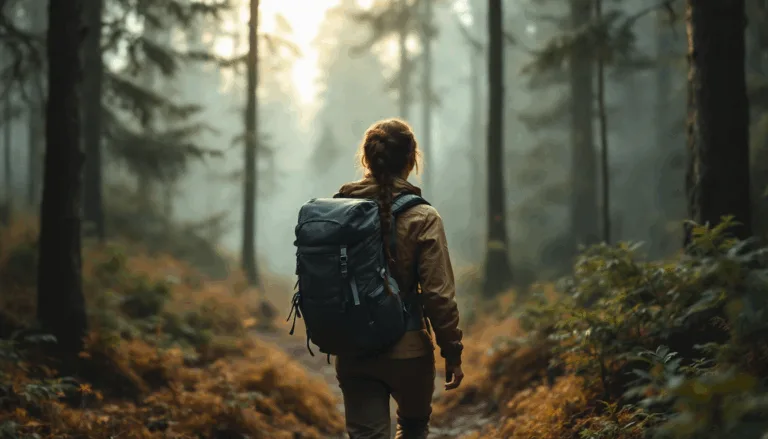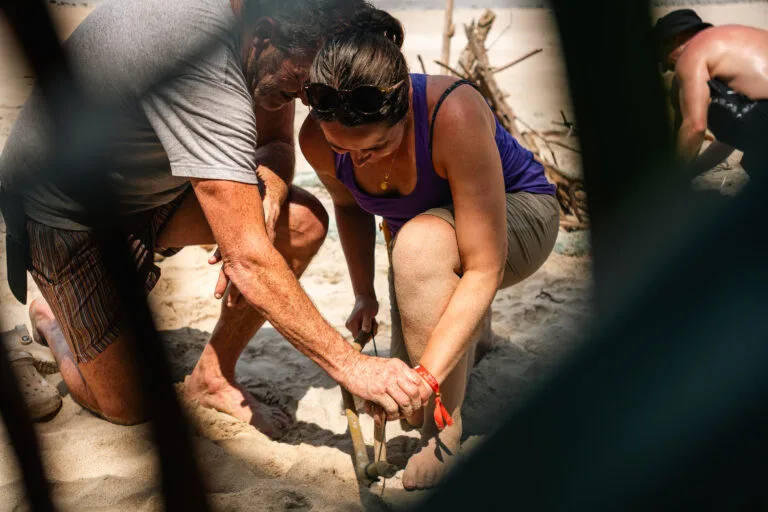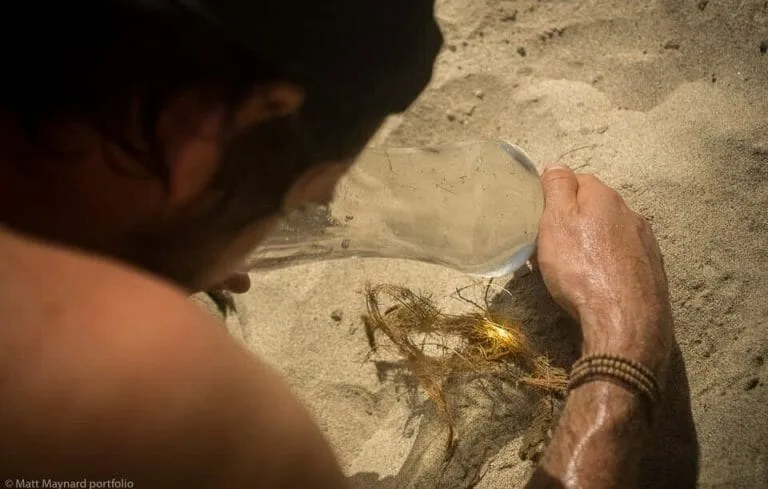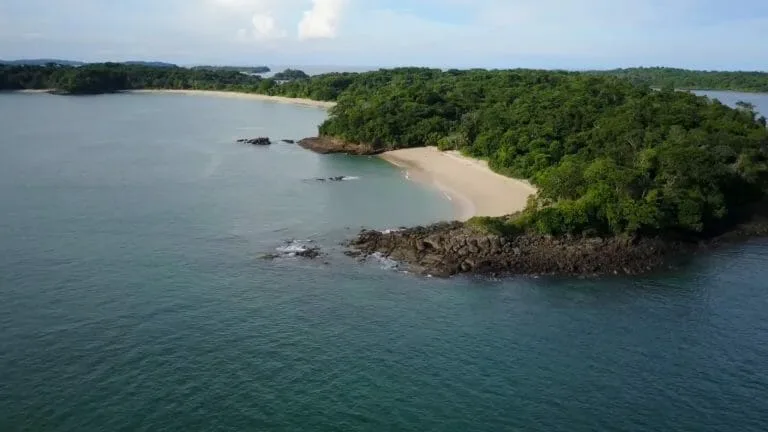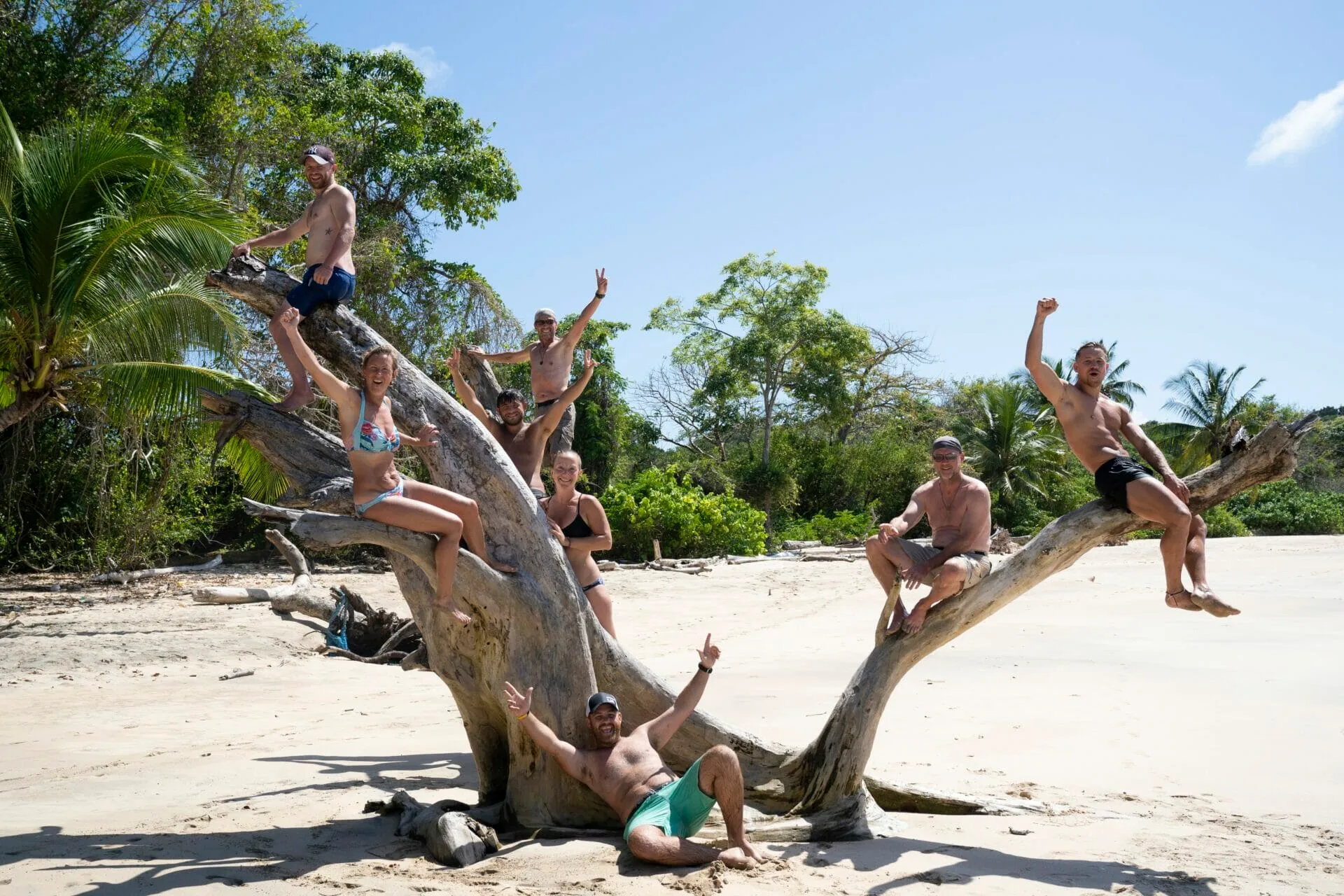
Top 3 Items to Take To a Deserted Island and Survive
What Would You Bring to be Stranded on a Desert Island?
You know those quizzes, “which 3 items would you take from this list to survive on a desert island?”, well we asked survival expert Tom Williams to let us know his pick.
In classic clickbait tradition, you might be surprised by number 3!Select your 3 and then scroll to the bottom to read Tom’s take on each.
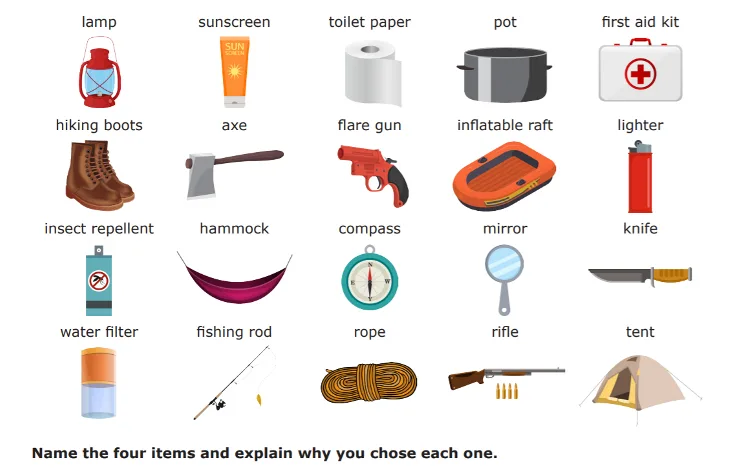
Being stranded on a deserted island is a scenario many of us may have pondered. From popular movies to hypothetical questions with friends, the topic sparks curiosity. But what if it were to happen in reality?
The thought of being stuck on a tropical island with no sign of civilization is both exciting and terrifying. Planning, understanding, and adaptability are the keys to survival.
What would you do if you were stranded on a deserted island? More importantly, what would you bring? And what are the most important items to take to a deserted island?
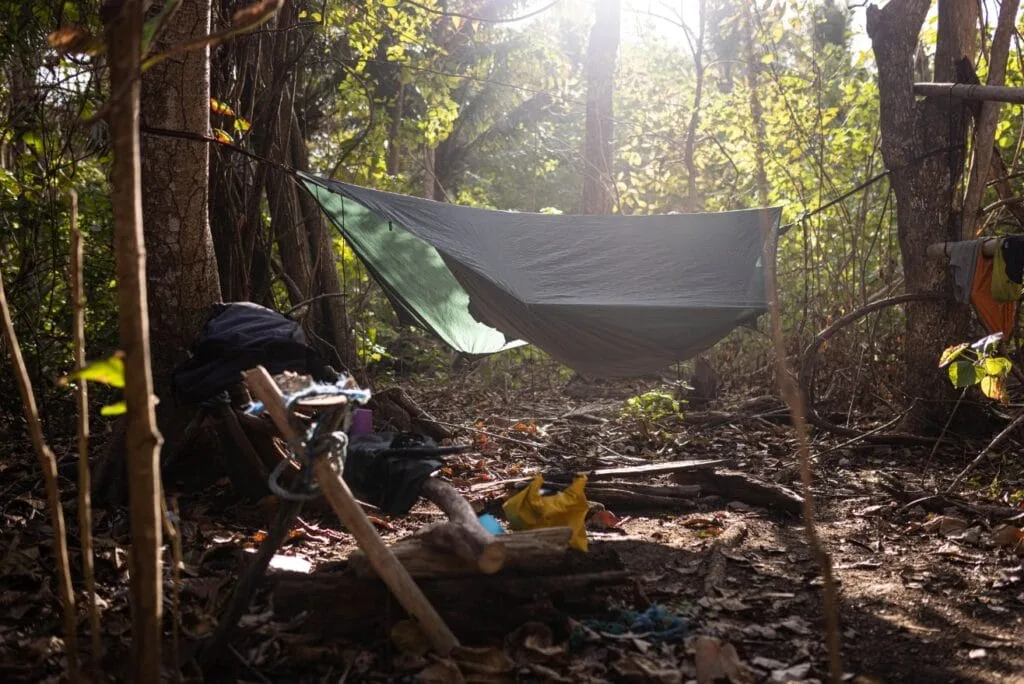
Top Items to Take to a Deserted Island If You Want to Survive
Let’s explore some common tools that can be invaluable in a desert island survival situation.
Light and Protection: Lamp and Sunscreen
- Lamp: A lamp, preferably solar-powered or hand-cranked, is useful for signalling and nighttime visibility.
- Sunscreen: In tropical climates, the sun can be one of your biggest adversaries. Sunscreen is crucial to protect your skin from harmful UV rays, preventing sunburn and reducing the risk of heatstroke. Is it essential though? Selecting the right time of day to undertake activities, appropriate clothing, mud, coconut oil, and even some corals can help provide sun protection.
Personal Care: Toilet Paper, Pot, and Medical Kit
- Toilet Paper: Personal hygiene is vital for both health and morale. This is also great dry tinder.
- Pot: A sturdy pot is essential for boiling water, and cooking food. It’s a great item, will it make my Top 3?
- First Aid Kit: A well-stocked first aid kit is a must for treating injuries and could be the difference between life or death.
Mobility and Rescue: Hiking Boots, Axe, Flare Gun
- Hiking Boots: A good pair of sturdy shoes or hiking boots is brilliant for navigating the rugged terrain and protecting your feet. If your feet are out of action then survival might become extremely difficult, however, don’t forget desert islands in the 21st century come with hundreds of pairs of washed up flip-flops.
- Axe/Machete: An axe is useful for chopping wood for fire, or building shelter and building a fire making kit. Highly versatile piece of kit.
- Flare Gun: In an emergency, a flare gun can be a brilliant signalling device for rescue, especially if you spot a search party or a passing ship. This could save your life.
Water and Shelter: Inflatable Raft, Lighter, Insect Repellent, Hammock
- Inflatable Raft: Perhaps not just for escaping or getting to fishing vantages. This can also be used for sleeping in and acting as a reservoir of rainwater or providing a roof.
- Lighter: Starting a fire is one of the most important survival skills. A lighter simplifies this process, allowing for quick and reliable fire-starting.
- Insect Repellent: Protect yourself from insect bites, which can lead to infections or diseases.
- Hammock: For off-ground sleeping, a hammock can be a comfortable alternative, especially in areas where ground-dwelling pests are a concern. Sleep should not be underrated.
Navigation and Communication: Compass, Mirror, Tent
- Compass: A compass is invaluable if navigation is required, especially if you need to explore the island for resources.
- Mirror: A signalling mirror can be used to reflect sunlight, making it an effective tool for catching the attention of rescuers from a distance.
- Tent: If building a natural shelter isn’t feasible, a lightweight, waterproof tent can provide quick and reliable cover.
Survival Essentials: Knife, Water Filter, Fishing Rod, Rope, Rifle
- Knife: A Swiss army knife or a similar multi-tool can be used for a variety of tasks, from preparing food to crafting tools. This is many people’s first choice.
- Water Filter: A portable water filter is great for purifying water. Though not much help if all you have is sea water. However, you could just boil it..
- Fishing Rod/Kit: Complementing your fishing kit, a rod increases your chances of catching fish, providing a steady food source.
- Rope: Rope has numerous uses, from constructing shelters to setting up traps. However, if you know how, you can make it from natural fibres and will often find plenty washed up.
- Rifle: While not always practical or available, a rifle can be used for hunting and protection in dire situations.
These tools, as outlined in the common survival items chart, can greatly enhance your ability to survive and stay comfortable on a deserted island. However, it’s important to remember that the usefulness of each item can vary depending on the specific conditions and resources available on the island.
3 Essential Things to Bring to a Deserted Island According to Expert Tom Williams
Tom Williams, known for his survival skills on Alone UK, is no stranger to choosing a selection of items to survive in the wild. His experiences have shaped his understanding of what it truly takes to survive in such extreme conditions.
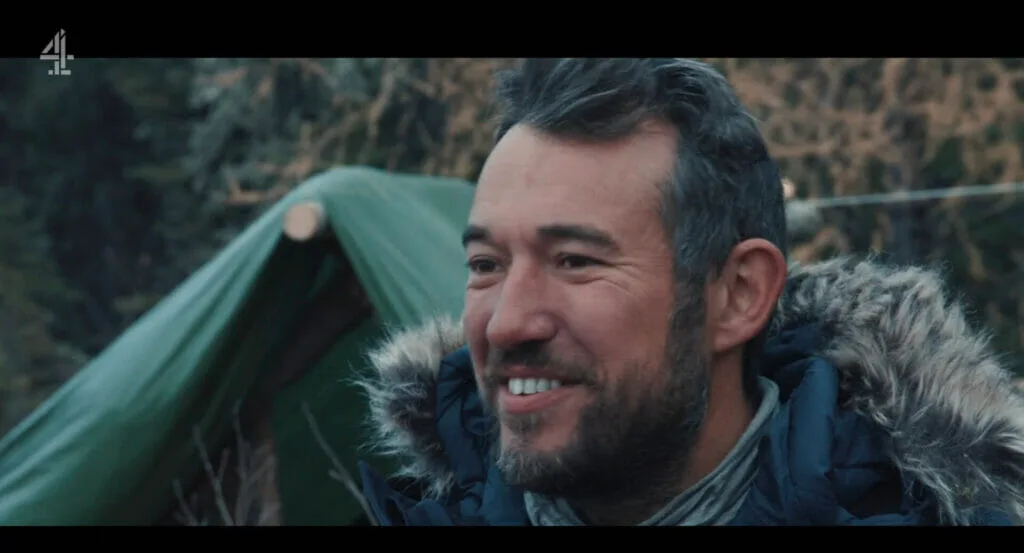
The axe – But If Possible, the Ever-Versatile Machete
According to Tom, a machete is at the top of the list. It’s the Swiss army knife of the wilderness.
Open coconuts for water, whittle hibiscus to start a friction fire, fell trees to build your shelter: the machete has got you covered. Its long blade and tough build make it ideal for chopping down branches for shelter or slicing through thickets.
USE: FIRE (and water)
Fishing Kit
Tom also emphasizes the importance of reliable fishing gear (with spare hooks). On a deserted island, where your next meal isn’t guaranteed, the ability to catch fish can mean the difference between thriving and barely surviving.
Fish are typically abundant on desert islands, so a good fishing kit, equipped with a variety of hooks, can provide a consistent food source. The line can also be used as cordage if required.
USE: FOOD
The inflatable boat
The third indispensable tool recommended by Tom is somewhat surprising: the inflatable boat. This can be used well beyond a floatation device, i.e. to access good fishing grounds.
A boat can collect large amounts of rainwater for drinking that can be decanted into washed-up water bottles. It is also fantastic for sleeping, being soft and comfortable, and creating a barrier against ground moisture. Good sleep should not be underestimated. It can also make an excellent tarp substitute as a roof. It is bright and could be left out as a signal for rescue (though don’t leave it in the sun too much or it will perish).
Finally, if your resources are dwindling and you need to try to find salvation, then you have an option should you need to make this challenging decision.
USE: SHELTER, WATER
Should Tom survive on an island which just these 3 items and film it? Let us know what you think.
The Basics of Desert Island Survival
3 things to bring on a deserted island. When faced with the prospect of surviving on a deserted island, and all survival situations for that matter, your initial response can set the tone for your entire experience. It’s a situation that demands not just physical strength but mental agility and strategic thinking.
Let’s walk through the essential steps and skills needed to survive in this demanding environment using natural resources.
First and Foremost: Avoid Panic
The first and most crucial step is to avoid panic. When you find yourself stranded, take a moment to breathe and assess your surroundings calmly. Panic is your biggest enemy in survival situations, leading to rash decisions and potentially dangerous outcomes. Remember, one of the most important factors: survival is a marathon, not a sprint.
The best strategy goes against your instincts, it is to DO NOTHING, initially, that is. Sit, consider, allow your heart rate to settle and pragmatically think out your survival priorities. Ok, we know they are shelter, water, making fire, and food, but the order you do these depends on every unique situation.
Let’s say there is a storm coming, is it going to be shelter or water? Well, we know we can live for 30 days without food, 3 days without water and only 3 hours with serious exposure; but a desert island is a warm environment, so this is your chance to collect rainwater, THEN focus on that shelter.
Securing Safe Drinking Water
Water is life, especially on a deserted island. Dehydration can quickly become a serious threat, so prioritize finding, and purifying, fresh water, above all else.
If you can find a reliable water source such as streams, lakes or natural springs then this is ideal, however this is not so common on desert islands. Check the water is not brackish (contains salt) and always boil it first. Unless you chose the water purifier among your items to make water safe for drinking. Typically those aren’t available otherwise, so collecting rainwater can be a lifesaver.
Devise a collection system with palm fronds, tarps and plastic bottles to be ready if the heavens open. This water is safe, so you can drink rainwater straight away without boiling it. Never stop collecting rainwater, it’s your number one job. You never know when the seasons might change.
Of course it would be remiss to not mention coconuts, your low-hanging fruit which can contain up to 500ml of fluids each. The green coconuts are drinking nuts. Be mindful that the brown coconut’s oil content can have a diuretic property. Drinking too many can, in some cases, lead to diarrhoea.
Building Shelters
The shelter is your sanctuary, sun protection and your shield. In the varied landscapes of a deserted island, finding or creating shelter is vital for protection against the elements and wild animals. Look for easy efficient natural shelters like caves tree buttresses or overhangs.
Failing that, create your own using available resources such as branches, leaves, and (if you have one) a tarp. The shelter should be sturdy enough to withstand weather changes and provide a safe space to rest. Consider the prevailing wind, tide and flood zones as well as proximity to resources when choosing your location. Read more about shelter building here.
Fire: The Multifaceted Survival Tool
Fire serves multiple purposes: it’s a source of warmth, a means to cook food, a way to boil water, and it can even deter wild animals. If you have a fire starter, a magnifying glass, or a glasses lens, use it. If not, it’s time to go old-school – learn the art of friction-based fire making. Fire not only addresses practical needs but also boosts morale, offering comfort on lonely nights. See our article on how to make fire here.
Food: Sustenance Through Fishing and Traps
On a deserted island, your diet will primarily consist of what you can catch. Fishing can be a reliable food source on deserted islands, so a fishing kit is invaluable. If you don’t have one, improvising with available materials, like vines for fishing line or sharpened sticks as spears, can work. Setting up traps for small mammals or birds can also provide essential nourishment. See our article on fishing without tools here.
Signalling for Help
Survival is not just about enduring, but also about being rescued. Create visible signals like a large ‘SOS’ on the beach or use mirrors, or any reflective materials during the day. At night, a fire can serve as a signal, remember green vegetation creates the most visible smoke so have a huge pile of ready dry wood and green foliage prepared in case you need to get that smoke billowing quickly.
What’s your strategy? Which tools would you bring to a desert island? Share your thoughts, and let’s keep learning from each other.
And for those who want to delve deeper into the art of bushcraft, why not join one of our island survival adventures today! Take the quiz below and find out which island would be perfect for your training.
Learn More About Desert Island Survival
Intrigued by the challenge of desert island survival? There’s so much more to learn, from detailed shelter-building techniques to advanced water purification methods. Check out our comprehensive blog post Desert Island Survival for a deeper dive into these survival essentials.


